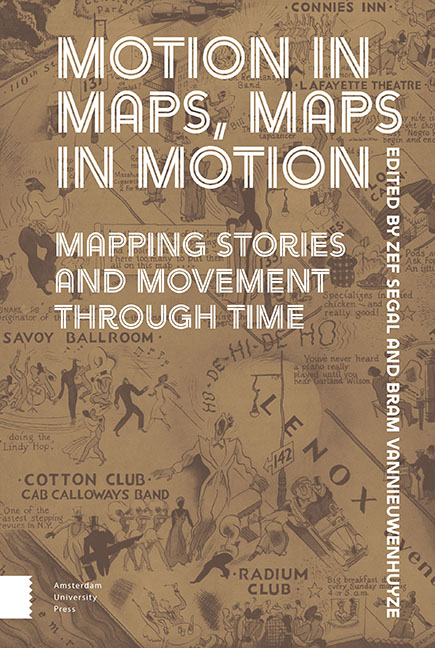Book contents
- Frontmatter
- Contents
- List of Figures
- List of Diagrams
- Introduction
- 1 The New World Map and the Old; The Moving Narrative of Joan Blaeu’s Nova Totius Terrarum Orbis Tabula (1648)
- 2 Entangled Maps; Topography and Narratives in Early Modern Story Maps*
- 3 Flow Mapping through the Times; The Transition from Harness to Nazi Propaganda
- 4 The Tensions of Heterochronicity on Cartographies of Imperial Motion in Japan
- 5 A School Atlas as a History Machine: The Bosatlas Online
- 6 Facebook Cartographies and the Mapping of Local History; Storied Maps from the American Middletown
- 7 ‘Change-of-State’ in the History of Cartography
2 - Entangled Maps; Topography and Narratives in Early Modern Story Maps*
Published online by Cambridge University Press: 20 November 2020
- Frontmatter
- Contents
- List of Figures
- List of Diagrams
- Introduction
- 1 The New World Map and the Old; The Moving Narrative of Joan Blaeu’s Nova Totius Terrarum Orbis Tabula (1648)
- 2 Entangled Maps; Topography and Narratives in Early Modern Story Maps*
- 3 Flow Mapping through the Times; The Transition from Harness to Nazi Propaganda
- 4 The Tensions of Heterochronicity on Cartographies of Imperial Motion in Japan
- 5 A School Atlas as a History Machine: The Bosatlas Online
- 6 Facebook Cartographies and the Mapping of Local History; Storied Maps from the American Middletown
- 7 ‘Change-of-State’ in the History of Cartography
Summary
Abstract
This chapter offers a close ‘reading’ of two story maps from the early modern Low Countries, a bird’s-eye perspective on the Ypres siege of 1383 engraved by Guillaume du Tielt about 1610, and a map of Northern Flanders, presumably made by Mathias Quad in 1604. Both are sophisticated multimedia products in which different layers of information are inextricably intertwined. The documents ask for a thorough analysis of their content as a whole. By considering them as ‘entangled products’, instead of simple by-products of official cartography, the chapter argues that the maps themselves were also part of a chain of objects, and that their production and consumption must be considered in broader contexts.
Keywords: Story map; History map; Eighty-Years’ War; Flanders; News Publishing
Old maps, old stories, new readers
In Western Europe, the late sixteenth century and all of the seventeenth century may perhaps be considered as the golden age of narrative cartography. Various books published at the time include maps with a visual narrative and numerous single-or double-leaf news maps from that period are still preserved in today's map collections (Figures 9 and 10). A common characteristic of such story maps is that they not only provide information about early spatial arrangements, but also include one or more visual narratives. In other words, these documents combine the representation of geodata with the genre of the so-called news or history prints. Battle pieces were especially popular; many of them were produced as bird’s-eye views that represent the military and political events of the Eighty Years’ War that scourged different parts of Western Europe between 1568 and 1648.
The interpretation of such early modern story maps is far from easy, especially because they are hybrid, multifaceted, and multi-layered documents, stuffed with different types of data: geodata, pieces of text inside and outside the map, heraldic emblems and symbols, diagrams, cartouches and different kinds of ornaments. More schematically, the maps juxtapose what has been called a ‘topographical layer’ (the static, lifeless representation of landscape or territory) and an ‘actional or narrative layer’ (the dynamic story).
- Type
- Chapter
- Information
- Motion in Maps, Maps in MotionMapping Stories and Movement through Time, pp. 57 - 80Publisher: Amsterdam University PressPrint publication year: 2020

